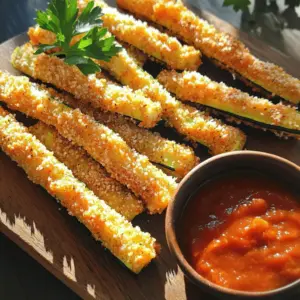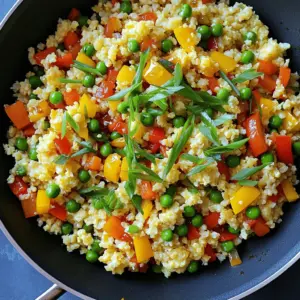- Mediterranean Quinoa Salad Fresh and Healthy Recipe
- Blueberry Coconut Lassi Creamy and Refreshing Drink
- Peach Mango Milk Tea Refreshing and Simple Recipe
- Pistachio Cardamom Iced Coffee Rich and Refreshing Drink
- Strawberry Dragon Fruit Agua Fresca Refreshing Drink
- Greek Orzo Salad Flavorful and Easy to Prepare
- Fresh Tomato Basil Bruschetta Simple and Tasty Dish
- Strawberry Shortcake Trifle Delightful Layered Dessert
- Easy Veggie Fried Rice Quick and Flavorful Meal
- Chocolate Chip Banana Bread Irresistibly Delicious Treat
- Sriracha Honey Garlic Chicken Flavorful and Easy Meal
- Rainbow Veggie Sushi Rolls Colorful and Healthy Delight
- One-Pot Creamy Tomato Basil Pasta Delight Recipe
- Birria Beef Tacos Flavorful and Easy Recipe Guide
- Simple Tuna Salad Quick and Tasty Meal Option
- Classic Egg Salad Delicious and Easy Recipe Guide
- Easy Garlic Butter Green Beans Simple and Tasty Side
- Oven-Baked Chicken Parmesan Easy and Flavorful Meal
- Simple Avocado Toast Easy and Healthy Recipe Guide
- Savory Sweet Potato Black Bean Tacos Recipe
- Savory Spinach Artichoke Dip Creamy and Flavorful Recipe
- Chocolate Chip Banana Muffins Simple and Tasty Treat
- Honey Sriracha Meatballs Simple and Flavorful Recipe
- Honey Sesame Chicken Flavorful and Easy Meal Idea
- Authentic Indian Chicken Curry Flavorful and Easy Dish
- Classic Deviled Eggs Simple and Tasty Appetizer
- Garlic Herb Roasted Potatoes Flavorful Side Dish
- Caprese Salad Skewers Fresh and Flavorful Treat
- Pesto Pasta Salad Flavorful and Easy Summer Dish
- Homemade Guacamole Fresh and Flavorful Dip Recipe
- Black Pepper Chicken Stir Fry Flavorful and Quick Meal
- Sausage and Potato Breakfast Bowls Tasty Morning Meal
- Quinoa Stuffed Peppers Flavorful and Healthy Recipe
- Crispy Air Fryer Chickpeas Flavorful and Healthy Snack
- Creamy Spinach Artichoke Dip Irresistible Flavor Boost
- Summer Berry Salad Fresh and Flavorful Delight
- No Bake Chocolate Oat Bars Quick and Easy Recipe
- Cilantro Lime Steak Bowls Flavorful and Fresh Meal
- Baked Zucchini Fries Crispy and Easy Snack Treat
- Spicy Thai Peanut Noodles Flavorful and Easy Recipe
- Mini Cheesecake Bites Tasty and Easy Treat Recipe
- Keto Cauliflower Fried Rice Quick and Tasty Recipe

![- 1 cup quinoa, rinsed - 2 cups vegetable broth or water - 1/2 cup cherry tomatoes, halved - 1 cucumber, diced - 1/4 cup red onion, finely chopped - 1/2 cup Kalamata olives, pitted and halved - 1/4 cup feta cheese, crumbled - 1/4 cup fresh parsley, chopped - 1/4 cup fresh mint leaves, chopped - 3 tablespoons olive oil - Juice of 1 lemon - Salt and pepper to taste Quinoa is the star of this dish. It’s a whole grain packed with protein and fiber. You can rinse the quinoa to remove any bitter taste. For this salad, using vegetable broth adds more flavor. The broth or water makes it fluffy and tasty. Next, we have fresh vegetables. Cherry tomatoes add sweetness and color. The cucumber gives a nice crunch. Red onion adds a bit of zing. Kalamata olives give a salty kick. Feta cheese brings creaminess to the mix. Fresh parsley and mint leaves give a burst of freshness. The dressing is simple and bright. Olive oil and lemon juice make it tangy. Salt and pepper add the right touch. This balance makes the salad lively. This salad is healthy and full of good nutrients. Quinoa has protein, fiber, and B vitamins. The vegetables bring vitamins and minerals. Feta offers calcium, while olives provide healthy fats. This recipe makes about four servings. It’s perfect for lunch or as a side dish. You can easily double it for a bigger crowd. Enjoy it fresh or let it chill in the fridge for later. Check out the [Full Recipe] for more details on how to make this delicious dish! 1. Bringing the liquid to a boil: Start by pouring 2 cups of vegetable broth or water into a medium saucepan. Turn the heat to high and let it come to a rolling boil. 2. Simmering instructions: Once boiling, add 1 cup of rinsed quinoa. Stir it once, then lower the heat to a gentle simmer. Cover the pot with a lid and let it cook for about 15 minutes. Check if the liquid is absorbed. 3. Cooling the quinoa: After cooking, remove the pot from heat. Transfer the quinoa to a large bowl and let it cool down. This helps keep the salad fresh and tasty. 1. Combining ingredients for the salad: In the large bowl with cooled quinoa, add the following: - 1/2 cup halved cherry tomatoes - 1 diced cucumber - 1/4 cup finely chopped red onion - 1/2 cup pitted and halved Kalamata olives - 1/4 cup crumbled feta cheese - 1/4 cup chopped fresh parsley - 1/4 cup chopped fresh mint leaves 2. Making the dressing: In a small bowl, mix together: - 3 tablespoons olive oil - Juice of 1 lemon - Salt and pepper to taste Whisk until smooth and well combined. 3. Tossing and combining everything: Pour the dressing over the salad ingredients. Gently toss everything together until the flavors blend. 1. Adjusting seasoning: Taste your salad and add more salt, pepper, or lemon juice if needed. This step makes sure every bite is full of flavor. 2. Refrigeration time: Cover the salad and chill it in the fridge for at least 30 minutes. This allows the flavors to mix and get even better. 3. Presentation tips: Serve the salad in a large bowl or on individual plates. Garnish with extra feta cheese and a sprinkle of fresh herbs for a beautiful look. Enjoy your Mediterranean quinoa salad! For the complete recipe, check out the [Full Recipe]. To make quinoa great, start with rinsing. Rinse the quinoa under cold water. This step helps remove the bitter coating called saponins. It takes just a minute, but it makes a big difference. For cooking, I suggest using vegetable broth. Broth adds rich flavor compared to plain water. If you prefer water, that works too, but you might want to add salt. To enhance flavor, try toasting the quinoa. Heat it in a dry pan for a few minutes. This brings out a nutty taste. You can also add spices like garlic powder or a bay leaf during cooking for extra depth. Lemon juice is key for taste. It adds brightness and balances the salad's flavors. If the salad seems flat, add more lemon juice to enhance the zing. Adding fresh herbs makes a huge difference. Use parsley and mint for freshness. You can also try basil or dill for a twist. Don’t be shy; herbs add layers of flavor. Finally, adjust salt and pepper. Always taste as you mix. If it needs more seasoning, add it in small amounts. This way, you get the perfect balance that suits your palate. For the complete recipe, check out the Full Recipe. {{image_2}} You can easily change up this salad to suit your taste. - Alternatives for feta cheese: Try goat cheese or vegan cheese. Both options add creaminess. - Other vegetables to include: Bell peppers, zucchini, or artichoke hearts add flavor and color. - Different dressings to try: A balsamic vinaigrette or tahini dressing can change the taste. If you have special dietary needs, this salad can adapt well. - Vegan adaptations: Leave out the feta cheese and use a vegan dressing. - Gluten-free options: Quinoa is naturally gluten-free, so this recipe works great. - Low-carb versions: Use cauliflower rice instead of quinoa for a low-carb twist. Feel free to explore these swaps and adaptations to create your perfect Mediterranean Quinoa Salad! You can find the Full Recipe above for more details. To keep your Mediterranean quinoa salad fresh, proper storage is key. Here’s how to do it: - Storing in the refrigerator: Place the salad in an airtight container. This keeps it fresh for days. Make sure to cover it well to avoid drying out. - Freezing options: You can freeze the salad, but I recommend doing this without the dressing. The veggies may become mushy when thawed. Use freezer-safe bags or containers for the best results. - Best containers for storage: Use glass or BPA-free plastic containers. They seal well and help keep flavors intact. How long does this salad last? In the fridge, it stays good for about 3 to 5 days. It’s best to eat it fresh, but it can last a little longer. What about signs of spoilage? Look for changes in color or smell. If the salad develops an off odor or the veggies look slimy, it’s time to toss it. Always trust your senses when it comes to food safety. How long does quinoa take to cook? Quinoa takes about 15 minutes to cook. Bring water or broth to a boil. Add rinsed quinoa, reduce heat, cover, and simmer. Once the liquid is absorbed, it's done! Can I make this salad ahead of time? Yes! This salad tastes even better after sitting. Make it a day ahead for great flavor. Just store it in the fridge. What can I serve with Mediterranean Quinoa Salad? This salad pairs well with grilled chicken or fish. You can also serve it alongside hummus and pita for a full meal. Why is my quinoa mushy? Mushy quinoa often means it had too much water. Use a 2:1 liquid to quinoa ratio. Make sure to rinse the quinoa before cooking to remove excess starch. How to add more protein? You can add chickpeas or black beans for protein. Grilled chicken or shrimp also works well. Feta cheese adds some protein too! Tips if the salad tastes bland. If the salad is bland, add more salt or lemon juice. Fresh herbs can boost flavor, too. Try mixing in some spices like cumin or paprika. How to double or halve the recipe? To double the recipe, simply double all the ingredients. To halve it, cut each ingredient in half. The cooking times will stay the same. Adjusting cooking times for larger portions. Cooking times for quinoa won’t change much. Just ensure you have enough liquid. Stir occasionally to avoid sticking. This guide shows you how to make a tasty Mediterranean quinoa salad. You learned the key ingredients, steps for cooking, and tips for mixing the salad. You also discovered variations to suit your taste and how to store your salad. Incorporating fresh ingredients makes the dish bright and healthy. Enjoy your delicious creation and don’t be afraid to get creative! The more you experiment, the better it gets.](https://cheftaling.com/wp-content/uploads/2025/06/0be730bd-9760-48b9-a761-37a8198b680a-300x300.webp)
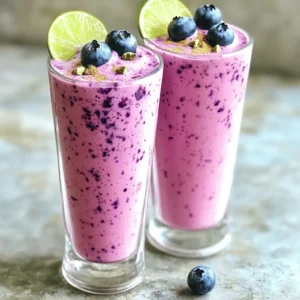
. To make a smooth puree, start with ripe fruit. Use one peach and one mango. Slice the peach and dice the mango. Place them in a blender. Blend until there are no lumps. If your puree seems thick, add a tiny splash of water. This will help it blend better. A smooth puree makes your drink look great and taste even better. Sweetness can change the whole drink. Start with two tablespoons of honey or agave syrup. Taste it after mixing. If you like it sweeter, add more. Some might want less sweetness, so adjust to your taste. Remember, the fruit adds natural sugar too. Always taste as you go to find the right balance. You can make your drink even more special with extra flavors. Try adding a teaspoon of vanilla extract for a nice touch. Ground cinnamon gives warmth and depth. If you want something fresh, add mint leaves for garnish. They look pretty and add a nice flavor. You can also explore other fruits like strawberries for a twist. {{image_2}} You can change the fruits in your peach mango milk tea. Try using strawberries for a sweet twist. You can also add passion fruit for a tangy kick. Mix and match based on what you love. The goal is to keep it fruity and fun. Each fruit brings its own flavor. This keeps your drink fresh and exciting. Using different teas can change the taste of your milk tea. Black tea gives a rich flavor, while green tea offers a lighter taste. Herbal teas, like chamomile, can add a calming touch. Experiment with what you have at home. Each tea base will give your drink a new vibe. So don’t be afraid to switch it up! If you want a vegan version, use plant-based milk. Almond milk or oat milk works well. You can also use maple syrup instead of honey for sweetness. For a keto option, use unsweetened almond milk and a low-carb sweetener. This way, you can enjoy peach mango milk tea without the carbs. These changes make it fit your diet while keeping it delicious. To keep your peaches and mangoes fresh, follow these tips: - Peaches: Store ripe peaches in the fridge. They stay fresh for about three to five days. If they are not ripe, keep them at room temperature until they soften. - Mangoes: Like peaches, keep ripe mangoes in the fridge. They can last about five days. If they are firm, leave them out to ripen first. Fresh fruit is best for your peach mango milk tea. Avoid frozen fruit if you want a bright, fresh flavor. After making your peach mango milk tea, you may want to store it. Here is how to do it right: - Refrigeration: Pour the milk tea into an airtight container. This helps keep it fresh and tasty. - Serving Later: When you serve it later, stir it well. The fruit puree may settle at the bottom, so mix it again. Your peach mango milk tea can last in the fridge for about two to three days. However, for the best flavor, enjoy it fresh. If you notice any change in taste or smell, it’s best to toss it out. Peach mango milk tea is a fruity drink made from fresh peaches and mangoes. You blend the fruits into a smooth puree. Then, you mix it with brewed black tea and milk for a creamy texture. This drink is sweet, refreshing, and perfect for hot days. You can find peach mango milk tea at many cafes and tea shops. Popular brands include Chatime and Gong Cha. They offer different versions of this drink. Local bubble tea cafes may also serve it. Check menus for special flavors and toppings. Peach mango milk tea has many health benefits. Peaches are high in vitamins A and C. They can help your skin and immune system. Mangoes are rich in antioxidants and fiber, which support digestion. Using milk adds calcium for strong bones. If you use honey or agave, you get a natural sweetener with fewer chemicals. Enjoy this drink as a tasty treat that is also good for you. In this article, we explored how to make delicious peach mango milk tea. We covered fresh ingredients, sweeteners, and the importance of using the right tea and milk. I shared tips for creating the perfect puree and adjusting sweetness to your taste. You can also experiment with different fruits and teas. Remember, storing your tea properly helps maintain its freshness. By following these steps, you can enjoy a tasty, healthy drink anytime. Enjoy your peach mango milk tea adventure!](https://cheftaling.com/wp-content/uploads/2025/06/e4a3f71c-5c12-4eb7-924f-790a7078de13-300x300.webp)
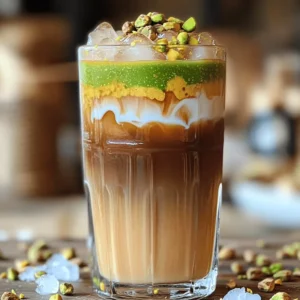

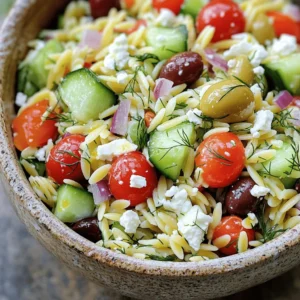

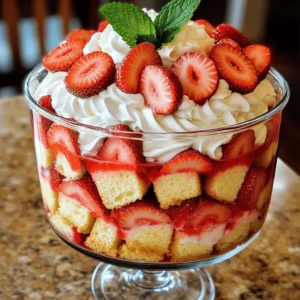


![To make Sriracha honey garlic chicken, you need a few simple items. Here’s what you will need: - 1.5 lbs chicken thighs, boneless and skinless - 1/4 cup Sriracha sauce - 1/4 cup honey - 4 cloves garlic, minced - 1 tablespoon soy sauce (low sodium) - 1 tablespoon apple cider vinegar - 1 tablespoon sesame oil - 1 teaspoon ground ginger - Salt and pepper to taste These ingredients blend together to create a sweet and spicy flavor that excites your taste buds. To finish your dish, you can add a few more touches. I like to use: - 2 tablespoons chopped green onions for garnish - Sesame seeds for garnish These garnishes add color and a nice crunch to your meal. This dish is tasty and offers good nutrition. Here’s a quick look at the nutrition per serving: - Calories: Approximately 350 - Protein: About 28g - Carbohydrates: 20g - Fats: 18g This chicken dish is filling and provides a balance of protein and carbs. Enjoy this flavorful and easy meal as part of a healthy diet. For the complete recipe, check out the [Full Recipe]. To make the marinade, start with a mixing bowl. Add 1/4 cup of Sriracha sauce. Then, pour in 1/4 cup of honey. Next, add 4 minced garlic cloves. Toss in 1 tablespoon of soy sauce, 1 tablespoon of apple cider vinegar, and 1 tablespoon of sesame oil. Include 1 teaspoon of ground ginger. Finally, sprinkle in salt and pepper to taste. Whisk all the ingredients until they mix well. This marinade packs a punch with sweet and spicy notes. Take 1.5 lbs of boneless, skinless chicken thighs. Place them in a large resealable bag or a shallow dish. Pour the marinade over the chicken. Make sure every piece gets coated nicely. Seal the bag or cover the dish. Let the chicken marinate in the fridge for at least 30 minutes. For more flavor, you can let it sit for up to 2 hours. This will make your chicken juicy and full of flavor. Preheat your oven to 375°F (190°C). After marinating, arrange the chicken thighs in a baking dish. Pour any leftover marinade over the chicken. Bake in the oven for about 25-30 minutes. You want the chicken to reach 165°F (74°C) inside. For a crispy finish, broil on high for 2-3 minutes. Watch it closely so it doesn’t burn. Once done, let the chicken rest for about 5 minutes. This helps the juices settle. Before serving, garnish with chopped green onions and sesame seeds. Your Sriracha honey garlic chicken is now ready to impress! For the full recipe, check out the details provided earlier. To get juicy chicken, start with good quality meat. I recommend using boneless, skinless chicken thighs. They stay moist and flavorful. When marinating, aim for at least 30 minutes. For even better flavor, marinate for up to 2 hours. Always preheat your oven or grill before cooking. This helps the chicken cook evenly. If grilling, use medium heat. For baking, keep your oven at 375°F (190°C). One common mistake is not marinating long enough. This can lead to bland chicken. Another mistake is overcooking the chicken. Use a meat thermometer to check for doneness. The internal temperature should reach 165°F (74°C). Also, avoid crowding the pan or grill. Give the chicken room to cook properly. Lastly, don’t forget to rest the chicken after cooking. This helps keep it moist. If you want less heat, reduce the Sriracha in the marinade. You can also add more honey to balance the spice. For those who love heat, try adding red pepper flakes or fresh chilies. This dish is flexible. Adjust it to fit your taste. If you want a milder flavor, use a sweet barbecue sauce instead of Sriracha. Experimenting is part of the fun! {{image_2}} You can swap chicken for other proteins. Try pork, beef, or shrimp. Each option brings a unique flavor. Pork works well with the sweet and spicy sauce. Beef gives a hearty taste. Shrimp cooks quickly and soaks up the marinade. Just adjust cooking times. For pork or beef, aim for 145°F (63°C). For shrimp, cook until they turn pink. If you want a plant-based option, use tofu or tempeh. Both soak up the marinade well. Press tofu to remove extra water. Cut it into cubes for better flavor absorption. Tempeh has a nutty taste, adding depth. Marinate just like you would chicken. Cook until golden brown for a nice texture. Boost the flavor with extra ingredients. Add fresh herbs like cilantro or basil. These herbs bring a fresh taste. A splash of lime juice brightens the dish. You can also mix in some pineapple for sweetness. If you love crunch, add chopped bell peppers or carrots. These add color and texture, making your dish even better. For the full recipe of Sriracha Honey Garlic Chicken, check out the complete details above! After you enjoy your Sriracha Honey Garlic Chicken, store any leftovers in an airtight container. This keeps the chicken fresh and tasty. Make sure to let the chicken cool down before sealing it. You can keep it in the fridge for about 3 to 4 days. If you want to save some for later, freezing is a great option. Place the cooled chicken in a freezer-safe bag. Squeeze out as much air as you can before sealing. This helps prevent freezer burn. It can stay good in the freezer for up to 3 months. To reheat, thaw the chicken in the fridge overnight. Then, warm it in the oven at 350°F (175°C) for 15 to 20 minutes. This will keep the chicken juicy and delicious. If you marinate your chicken, you can store it in the fridge. The marinated chicken is safe to eat for up to 2 days before cooking. Always keep it covered to prevent contamination. If you don’t cook it within that time, it’s best to freeze it. This way, you can enjoy that bold flavor later. Yes, you can make Sriracha Honey Garlic Chicken in a slow cooker. Start by mixing the marinade as usual. Place the chicken thighs in the slow cooker and pour the marinade over them. Cook on low for about 6 hours or on high for about 3 hours. The chicken will be tender and full of flavor. You can serve this chicken with many sides. Here are some tasty ideas: - Steamed rice - Fried rice - Quinoa - Roasted vegetables - Salad with a light dressing These sides balance the chicken's flavors. They also add color and nutrition to your meal. Sriracha has a medium heat level. It is spicy but not overwhelming. If you want less heat, you can use less Sriracha. You can also mix it with more honey. If you prefer other hot sauces, you can try them. Just remember, each sauce has a different flavor. Adjust the amount based on your taste. Enjoy experimenting! Sriracha Honey Garlic Chicken is tasty and easy to make. We explored its main ingredients, marinade steps, and helpful tips. Remember to avoid common mistakes and adjust spice to fit your taste. You can even try different proteins or meatless options. Storing leftovers properly ensures you enjoy it later. I hope you try this recipe and make it your own. Enjoy your cooking adventure!](https://cheftaling.com/wp-content/uploads/2025/06/bd5bab06-fc8d-46a0-81e5-524910b899f8-300x300.webp)
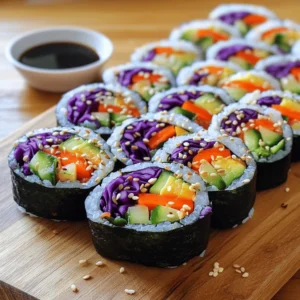
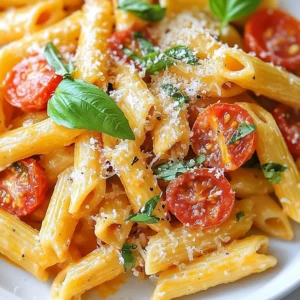

![- Tuna and Vegetables - 2 cans of tuna in water, drained - 1/2 cup celery, finely chopped - 1/4 cup red onion, finely chopped - 1/2 cup orange segments (fresh or canned) - Dressing Components - 1/4 cup Greek yogurt - 2 tablespoons Dijon mustard - 1 tablespoon fresh lemon juice - Salt and pepper to taste - Optional Garnishes - 1 tablespoon fresh cilantro, chopped (optional) - Lettuce leaves for serving (optional) This recipe is simple yet flavorful. You can gather all these ingredients quickly. The tuna gives you protein, while the veggies add crunch and color. The Greek yogurt and mustard bring creaminess and tang to the salad. If you like fresh herbs, cilantro adds a nice touch. You can serve it on lettuce leaves or use it as a filling for sandwiches. The flavor combination makes every bite enjoyable. For the full recipe, check out my Savory Citrus Tuna Salad. Start by draining your tuna. Use two cans of tuna in water. In a medium bowl, mix the tuna with 1/2 cup of finely chopped celery and 1/4 cup of finely chopped red onion. These veggies add crunch and flavor to the dish. Gently fold in 1/2 cup of orange segments. This adds a sweet twist to the salad. In a small bowl, whisk together 1/4 cup of Greek yogurt, 2 tablespoons of Dijon mustard, and 1 tablespoon of fresh lemon juice. Add salt and pepper to taste. The yogurt gives creaminess, while the mustard adds a nice kick. Make sure the dressing is smooth and well mixed. Pour the dressing over the tuna mixture. Stir everything together until well coated. If you like, fold in 1 tablespoon of chopped fresh cilantro for an extra layer of flavor. Taste the salad and adjust the seasoning if needed. For the best flavor, refrigerate the tuna salad for at least 30 minutes. Serve it on lettuce leaves or use it as a sandwich filling. You can find the full recipe for this dish [here]. Best Practices for Mixing Start by using a medium bowl. Use a fork to break apart the tuna. Mix in the celery and onion. Gently fold in the orange segments last. This keeps them whole and juicy. Adjusting Seasoning to Taste After mixing, taste your salad. You may want more salt or pepper. Add a little more Dijon mustard for a tangy kick. Always mix well after each addition to ensure even flavor. Chilling for Flavor Enhancement Refrigerate your tuna salad for at least 30 minutes. This waiting time helps the flavors blend. Chilling also makes the salad refreshing. Serve it cold on lettuce or in a sandwich. For more ideas, check the Full Recipe. {{image_2}} You can make your simple tuna salad more fun and tasty. Here are some ideas: - Adding Additional Protein: Try adding cooked chickpeas or diced hard-boiled eggs. They boost the protein and make your salad heartier. You will enjoy the extra texture and flavors. - Incorporating Different Vegetables: Mix in diced bell peppers, shredded carrots, or corn. Each adds a nice crunch and color to your salad. Feel free to experiment with what you have at home. - Experimenting with Dressings: Instead of just Greek yogurt, try using mayo, avocado, or a vinaigrette. Each option gives a different taste. You can even mix and match for a unique flavor! These simple changes can turn your tuna salad into a new dish every time. Enjoy the process of mixing flavors and textures. For a full recipe, check out the Savory Citrus Tuna Salad. It is key to store your tuna salad properly. This keeps it fresh and safe to eat. - Recommended Storage Containers: Use airtight containers. Glass or plastic works well. Make sure the lid seals tightly. - Shelf Life in the Fridge: Tuna salad lasts about 3 to 5 days in the fridge. Check for any off smells or changes in texture before eating. - Freezing Options for Tuna Salad: You can freeze tuna salad for about 1 to 2 months. However, the texture may change after thawing. If you want to keep it fresh, freeze it before adding any dressing or veggies. By following these tips, you can enjoy your savory citrus tuna salad whenever you want. For more detailed steps, check out the Full Recipe. Can I use canned tuna in oil? Yes, you can use canned tuna in oil. It adds a richer flavor. Just drain the oil before mixing. This will keep your salad light and fresh. How long does tuna salad last in the fridge? Tuna salad can last about three to five days in the fridge. Always store it in an airtight container. This helps keep it fresh and tasty. What to serve with tuna salad? You can serve tuna salad on lettuce leaves for a light meal. It also works great as a sandwich filling. Pair it with crackers or fresh veggies for a crunchy side. For more ideas, check out the Full Recipe. You learned how to make a tasty tuna salad in this blog post. We covered ingredients, step-by-step instructions, and helpful tips. You can customize your salad with different proteins and veggies. Plus, I shared storage tips to keep your salad fresh. Remember, good cooking is all about experimenting and finding what you love. You now have the skills to create your perfect tuna salad. Enjoy your time in the kitchen!](https://cheftaling.com/wp-content/uploads/2025/06/4eff90ab-e835-450b-ac2b-a3156188e209-300x300.webp)
. {{image_2}} You can spice up your egg salad with a few simple tweaks. Adding a dash of cayenne pepper gives a nice kick. Try smoked paprika for a deep flavor. You can also use curry powder for a unique twist. Each spice adds a new layer of taste. Experiment with different styles to find your favorite. Want to lighten up your egg salad? Swap out mayonnaise for Greek yogurt. It adds creaminess and extra protein. You can also add mashed avocado for a rich texture. This keeps the salad healthy and flavorful. Consider adding chopped bell peppers for crunch and color. These changes keep your dish fresh and nutritious. Serving egg salad can be fun and creative. Try scooping it into avocado halves for a low-carb option. You can also serve it in lettuce wraps for a fresh bite. For a cute snack, place it on cucumber slices. Egg salad can also top whole-grain crackers for a crunchy treat. Explore different ways to serve this classic dish! To keep your egg salad fresh, store it in an airtight container. This will help prevent air from drying it out. Make sure to seal the container tightly. Keep it in the fridge right after making it. Egg salad can last in the fridge for about 3 to 5 days. Always check for signs of spoilage before eating. If it smells off or looks strange, throw it out. It’s better to be safe than sorry. I do not recommend freezing egg salad. Freezing can change its texture. The mayonnaise and eggs may separate when thawed. Instead, enjoy it fresh! For the best flavor, make only what you need. You can always whip up a new batch from the Full Recipe when you crave more. Yes, you can use different mustards to change the flavor. Yellow mustard gives a classic taste. Spicy brown mustard adds a nice kick. Honey mustard is sweet and tangy. Try any of these to find your favorite. Mixing mustards can also create a unique taste. Experiment and have fun with it! You can serve egg salad in many ways. A classic option is on whole-grain bread for a sandwich. You can also use lettuce leaves for a low-carb choice. Serving it on crackers makes a great snack. For a fancy touch, place it in a small bowl with fresh herbs on top. Each way brings out its creamy goodness. To reduce mayo in egg salad, you can use Greek yogurt. It gives a creamy texture with less fat. You can also add more chopped veggies for extra crunch. Using mustard can add flavor without extra calories. Try these tips to make a lighter version that still tastes great! This blog post covered key ingredients for egg salad. I shared how to boil and peel eggs, mix the salad, and tweak the flavor. You learned tips for boiling, storing, and serving egg salad. We also explored variations with spices and healthy swaps, along with storage tips. In closing, egg salad can be simple or creative. Use the steps and ideas here to make it your own. Enjoy your delicious egg salad!](https://cheftaling.com/wp-content/uploads/2025/06/27346720-7a17-4520-a01f-241f83382a18-300x300.webp)
![To make Easy Garlic Butter Green Beans, you need just a few simple ingredients: - 1 pound fresh green beans, trimmed - 4 tablespoons unsalted butter - 4 cloves garlic, minced - 1 teaspoon lemon zest - 1 tablespoon fresh lemon juice - 1 teaspoon salt - ¼ teaspoon black pepper - ¼ teaspoon red pepper flakes (optional, for a kick) - 2 tablespoons chopped fresh parsley (for garnish) These ingredients create a dish that is fresh, bright, and full of flavor. The green beans stay crisp, while the garlic and butter add a rich taste. If you want to add more flavor, consider these options: - Sliced almonds or walnuts for crunch - Grated Parmesan cheese for creaminess - A splash of soy sauce for umami - Fresh herbs like thyme or dill for an herbal twist These extras can help you customize the dish to your liking. Feel free to experiment with flavors you enjoy! Don’t worry if you can’t find all the ingredients. Here are some easy swaps: - Use olive oil instead of butter for a dairy-free option. - Swap fresh green beans for frozen ones; just thaw them first. - Lemon juice can be replaced with lime juice for a different zing. These substitutions will still give you a tasty result, so you can enjoy this dish no matter what you have on hand. For the full recipe, check out the Garlic Butter Bliss Green Beans section! First, you need to choose fresh green beans. Look for beans that are bright green and firm. They should snap easily when you bend them. Trim the ends off each bean. This step makes them easy to eat. Now, fill a large pot with water and add salt. Bring the water to a boil over medium-high heat. Once boiling, add the green beans. Blanch the beans for about 3-4 minutes. They will turn bright green and stay crisp. After cooking, drain them immediately. Then, plunge the beans into a bowl of ice water. This will stop the cooking and keep their color. Now, let’s make the garlic butter. In a large skillet, melt 4 tablespoons of unsalted butter over medium heat. Once melted, add 4 cloves of minced garlic. Sauté the garlic for 1-2 minutes. You want it fragrant but not brown. After that, drain the green beans from the ice water. Shake off any extra water and add them to the skillet. Stir in 1 teaspoon of lemon zest, 1 tablespoon of lemon juice, 1 teaspoon of salt, ¼ teaspoon of black pepper, and ¼ teaspoon of red pepper flakes if you like a little heat. Cook for another 2-3 minutes. Stir occasionally to coat the beans in the garlic butter. For serving, choose a white platter. It makes the green beans pop with color. Drizzle any leftover garlic butter over the beans. Sprinkle 2 tablespoons of chopped fresh parsley on top for a fresh look. This adds a nice touch and extra flavor. Serve the beans warm and enjoy this easy, tasty side dish. For the complete details, check the Full Recipe. To get green beans that are crisp and bright, start with fresh beans. Look for beans that are firm and vibrant in color. When you blanch them, keep an eye on the time. Blanch for only 3-4 minutes. The beans should be tender but still snap when you bite them. After cooking, quickly plunge them into ice water. This stops the cooking and locks in the bright color. Timing is key to perfect garlic butter green beans. If you are cooking for guests, prep the beans ahead of time. You can blanch them early in the day. When it's time to serve, simply heat the garlic butter and add the beans. This method keeps them fresh and warm. For cooking methods, a skillet works best for the garlic butter. A steamer can also work if you prefer a lighter touch. Adding flavor is simple. Besides garlic, you can use lemon zest and lemon juice. They brighten the dish and add a nice tang. If you like a bit of heat, sprinkle in red pepper flakes. Fresh parsley adds color and freshness. You can also try adding nuts or cheese for a different take. For more flavor ideas, check the Full Recipe. {{image_2}} You can add nuts or cheese to your garlic butter green beans to change the texture. Adding slivered almonds or chopped walnuts gives a nice crunch. For cheese lovers, sprinkle some grated Parmesan or crumbled feta on top. This adds a salty flavor that pairs well with the buttery beans. If you like a kick, make a spicy version of this dish. Add more red pepper flakes to the recipe. You can also include sliced jalapeños for extra heat. This will make your green beans stand out. Just remember to balance the spice with the garlic butter. This dish can easily fit a vegetarian or vegan diet. Simply swap the unsalted butter for a plant-based butter. You can also use olive oil for a lighter twist. The rest of the ingredients remain the same. This way, everyone can enjoy the garlic butter green beans. Check the [Full Recipe] for all the details! To store leftover garlic butter green beans, place them in an airtight container. Make sure to let them cool to room temperature first. Seal the container tightly to keep the beans fresh. You can store them in the fridge for up to three days. When you are ready to eat your leftovers, reheating is simple. You can use the microwave or a skillet. For the microwave, place the beans in a bowl, cover, and heat for one to two minutes. For the skillet, add a little butter over medium heat. Add the beans and stir for about three to four minutes until heated through. This keeps them tasty and flavorful. If you want to store garlic butter green beans for a long time, freezing works well. First, let the beans cool completely. Then, place them in a freezer-safe container or freezer bag. Squeeze out as much air as you can to prevent freezer burn. You can freeze them for up to three months. When you are ready to use them, thaw in the fridge overnight before reheating. This will help them hold their flavor and texture. For the full recipe, check out the details above. For this recipe, fresh green beans are best. Look for beans that are bright green and firm. Avoid beans that are limp or have brown spots. You can also use haricots verts, which are thinner and more tender. They cook quickly and add a nice touch to your dish. Frozen green beans work too, but fresh ones give the best taste and texture. Yes, you can prep garlic butter green beans in advance. Blanch the beans and cool them. Store them in the fridge in an airtight container. When you’re ready to eat, just sauté them with garlic butter. They heat up well and still taste great. This method saves time on busy days. To keep garlic from burning, always use medium heat. Cook it slowly and stir often. Add the minced garlic after the butter melts. Don’t let it sit too long in the pan. If the garlic starts to brown, remove it right away. This keeps the flavor fresh and not bitter. For more tips and the full recipe, check out the Garlic Butter Bliss Green Beans section! This blog post covered easy garlic butter green beans, from key ingredients to cooking steps. We explored ways to boost flavor and texture, plus tips for crisp beans. Variations let you switch things up, and storage info helps keep leftovers fresh. In closing, these simple techniques and ideas make this dish flavorful and fun. With practice, you’ll master garlic butter green beans that impress everyone. Enjoy your cooking journey!](https://cheftaling.com/wp-content/uploads/2025/06/eb460d13-b3bc-4e0f-a701-6b3f9340aed7-300x300.webp)

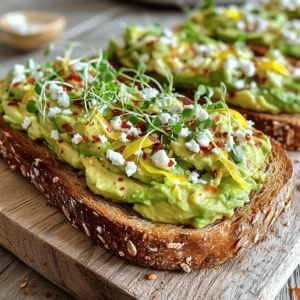
![- 2 medium sweet potatoes, peeled and diced - 1 can (15 oz) black beans, drained and rinsed - 1 tablespoon olive oil - 1 teaspoon cumin - 1 teaspoon smoked paprika - 1/2 teaspoon garlic powder - 1/2 teaspoon chili powder - Salt and pepper to taste - 8 small corn tortillas - 1 avocado, sliced - 1/4 cup fresh cilantro, chopped - 1 lime, cut into wedges - Optional: Sour cream or Greek yogurt for topping Sweet potatoes are the star here. They give a nice, sweet taste and creamy texture. Black beans add protein and fiber, making this dish filling. Olive oil helps the sweet potatoes roast nicely and adds flavor. Cumin and smoked paprika bring warm, earthy notes. Garlic powder and chili powder add depth and a hint of spice. Salt and pepper enhance all the flavors. Corn tortillas hold the filling and add a bit of crunch. Avocado adds creaminess and freshness. Fresh cilantro gives a pop of brightness. Lime adds a zesty finish that brightens the dish. If you want a creamier topping, use sour cream or Greek yogurt. For a dairy-free option, skip the topping or use a plant-based yogurt. You can swap corn tortillas for flour tortillas if you prefer. If you want more spice, add diced jalapeños or a hot sauce. You can also use other beans like pinto or kidney beans instead of black beans. To start, gather your ingredients. You need two medium sweet potatoes, a can of black beans, olive oil, and spices. Peel and dice the sweet potatoes into small cubes. This helps them cook faster. Rinse and drain the black beans. It removes extra salt and makes them taste better. Now, preheat your oven to 425°F (220°C). In a large bowl, toss the sweet potatoes with olive oil, cumin, smoked paprika, garlic powder, chili powder, salt, and pepper. Make sure every piece gets coated. Spread the sweet potatoes on a baking sheet and roast them for 25-30 minutes. Stir once halfway through. While the sweet potatoes roast, heat a small pot over medium heat. Add the drained black beans. Season them with salt and pepper. Cook for about 5-7 minutes, stirring occasionally. They should be warm and flavorful. Once the sweet potatoes are tender and caramelized, it’s time to assemble the tacos. Warm the corn tortillas in a skillet or by placing them directly in the oven for one minute. On each tortilla, add a layer of roasted sweet potatoes and black beans. Top with sliced avocado and chopped cilantro. Serve the tacos with lime wedges on the side. If you like, add a dollop of sour cream or Greek yogurt for creaminess. Enjoy your tasty Sweet Potato Black Bean Tacos by following the [Full Recipe]. To get the best sweet potatoes, start with fresh ones. Peel and dice them into small cubes. This helps them cook evenly. Toss the diced sweet potatoes with olive oil and spices. I like to use cumin, smoked paprika, garlic powder, and chili powder. These spices add great flavor. Roast them in a hot oven. Set it to 425°F (220°C). The sweet potatoes will be tender and caramelized in about 25-30 minutes. For tasty black beans, use canned ones for ease. Drain and rinse them well to remove the excess salt. Heat them in a small pot over medium heat. Add salt and pepper as they warm up. You can also add cumin or lime juice for extra flavor. Stir occasionally for about 5-7 minutes. The beans should be warm and ready to go by the time the sweet potatoes finish cooking. When ready to serve, warm the corn tortillas. You can heat them in a skillet or right in the oven. This step makes them soft and pliable. Layer the roasted sweet potatoes and black beans in each tortilla. Top with sliced avocado and fresh cilantro. A squeeze of lime juice brings it all together. For extra creaminess, add sour cream or Greek yogurt on top. Enjoy your tacos warm and fresh! For the full recipe, check the recipe section. {{image_2}} This recipe is naturally vegan and vegetarian. Sweet potatoes and black beans are full of flavor and nutrients. You can enjoy these tacos without any animal products. Just skip the sour cream or Greek yogurt. Instead, try cashew cream or a dollop of guacamole for added creaminess. These tacos are also easy to make gluten-free. Corn tortillas are a perfect choice. They are gluten-free and have a nice texture. Make sure to check the package to confirm they are certified gluten-free. If you want to try a different wrap, lettuce leaves work well too! You can change the ingredients to suit your taste. Here are some tasty swaps: - Replace sweet potatoes with butternut squash for a different flavor. - Use chickpeas instead of black beans for a new twist. - Add bell peppers or zucchini for extra veggies. - Try different spices like chili lime seasoning for a zesty kick. Feel free to get creative! These variations let you customize your tacos while still keeping them delicious. For more ideas, check out the Full Recipe and enjoy experimenting! To keep your leftover tacos fresh, store them in an airtight container. Place the tacos in the fridge. They will stay good for up to three days. If you have extra filling, keep it in a separate container. This helps prevent soggy tortillas. When you want to enjoy your tacos again, reheat them in a skillet. Heat the skillet over medium heat. Place the tacos in the pan for about 2-3 minutes on each side. This gets them warm and crisp again. You can also microwave the filling separately if you prefer. Just heat it for about 1-2 minutes, stirring halfway. Preparing ahead makes taco night easy. You can roast the sweet potatoes and heat the black beans in advance. Store them in the fridge for up to three days. When it's time to eat, simply warm them and assemble your tacos. You can also chop your toppings, like avocado and cilantro, in advance. This saves time and makes dinner quick. For the full recipe, check out the complete guide to Sweet Potato Black Bean Tacos. To make these tacos from scratch, start by gathering your ingredients. You need sweet potatoes, black beans, and spices. Cut the sweet potatoes into small cubes. Toss them with olive oil and spices. Roast them in the oven until they are soft. Heat the black beans in a pot. Warm the tortillas in a skillet or oven. Layer the roasted sweet potatoes and black beans on each tortilla. Top with avocado and cilantro. Serve with lime wedges. For detailed steps, check the Full Recipe. These tacos pair well with a variety of sides. You can serve a fresh salad to add crunch. A corn salad brings sweetness and color. Guacamole is always a hit and it adds creaminess. Rice or quinoa can make the meal heartier. For drinks, try a light soda or a fruity iced tea. Yes, you can freeze these tacos! To do this, prepare the sweet potatoes and black beans. Let them cool completely before assembling. Wrap each taco in foil or plastic wrap. Place them in an airtight container or a freezer bag. When you’re ready to eat, thaw them in the fridge overnight. Then, reheat in the oven or microwave before serving. In this blog post, we explored making delicious Sweet Potato Black Bean Tacos. We covered the necessary ingredients and shared detailed descriptions. You learned step-by-step how to prepare, cook, and assemble your tacos. We also included tips for perfect cooking and serving ideas. Remember, you can adjust flavors and ingredients to suit your taste. These tacos are not just versatile but easy to store and reheat. Enjoy your taco-making journey and get creative in the kitchen!](https://cheftaling.com/wp-content/uploads/2025/06/c6e58c8d-ac76-4c5e-993a-77d204217864-300x300.webp)
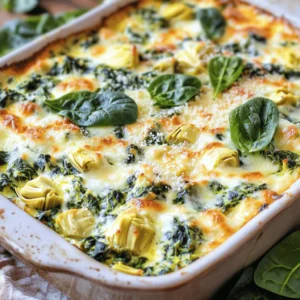
![- 2 ripe bananas, mashed - 1/2 cup granulated sugar - 1/4 cup brown sugar, packed - 1/3 cup unsalted butter, melted - 1 large egg - 1 teaspoon vanilla extract - 1 teaspoon baking soda - 1/4 teaspoon salt - 1 1/2 cups all-purpose flour - 1 cup semi-sweet chocolate chips - 1/2 cup chopped walnuts (optional) The main ingredients make this recipe special. Ripe bananas add natural sweetness and moisture. Using both granulated and brown sugar gives a deep flavor. The melted butter makes the muffins rich and soft. One egg helps bind everything together. A splash of vanilla brightens the taste. Next, we move to dry ingredients. Baking soda gives the muffins a nice rise. A pinch of salt balances the sweetness. All-purpose flour holds the muffins together. Finally, let’s talk about mix-ins. Chocolate chips are a must for that gooey, sweet touch. If you want, add walnuts for crunch. They bring a nice texture contrast. With these ingredients, you will create chocolate chip banana muffins that are simple and tasty. For the full recipe, check out the details above. Enjoy baking! - Preheat oven to 350°F (175°C). - Line muffin tin with paper liners or grease with cooking spray. - In a large bowl, combine mashed bananas with granulated and brown sugar. - Add melted butter and mix until smooth. - Beat in the egg and vanilla extract until fully incorporated. - In another bowl, mix the baking soda, salt, and flour together. - Gradually add the dry mix into the banana mixture without over-mixing. - Fold in chocolate chips and walnuts if you choose to add them. - Fill muffin cups about 3/4 full with the batter. - Bake for 18-20 minutes. Check doneness with a toothpick inserted in the center. For the full recipe, visit the section titled Full Recipe. - Ensure bananas are very ripe for maximum sweetness. - Do not overmix to keep muffins fluffy. Using ripe bananas is key. The darker the skin, the sweeter the banana. This sweetness makes your muffins taste great. Overmixing can lead to heavy muffins. Mix just until you see no dry flour. This keeps your muffins light and airy. - Serve warm, optionally dusted with powdered sugar. - Pair with whipped cream for added richness. Warm muffins taste best. If you dust them with powdered sugar, they look lovely too. A dollop of whipped cream adds a rich touch and makes each bite even yummier. - What to do if muffins are too dense? - Fixing dry muffins with simple adjustments. If your muffins are too dense, try using fresh baking soda. Make sure it’s not expired. Also, don’t press the batter down when filling the cups. If muffins turn out dry, add a bit more mashed banana next time. You can also add a splash of milk to the batter. For the complete recipe, check the [Full Recipe]. {{image_2}} You can change the flavor of your muffins easily. A dash of cinnamon or nutmeg adds warmth. Both spices bring a lovely aroma and taste. You can also swap the chocolate chips for dried fruit. Think raisins or cranberries. Nuts like walnuts or pecans work great, too. Each choice gives your muffins a new twist. If you need a gluten-free option, use almond or oat flour. These flours keep the muffins light and tasty. You can also make them vegan. Try using a flax egg instead of a regular egg. Just mix one tablespoon of flaxseed meal with two and a half tablespoons of water. Let it sit for a few minutes to thicken. Coconut oil can replace the butter, making these muffins dairy-free. Mini muffins are a fun option for bite-sized treats. If you choose mini, adjust the bake time. Bake for about 12-15 minutes instead of 18-20 minutes. Always check with a toothpick to see if they are done. For a perfect mini muffin, fill the cups only halfway. This helps them rise nicely without spilling over. To keep your chocolate chip banana muffins fresh, store them at room temperature. Use an airtight container to help them last up to three days. If you want to keep them longer, refrigerate or freeze them. For freezing, wrap each muffin tightly in plastic wrap, then place them in a freezer bag. This way, they can stay fresh for up to three months. When it's time to enjoy your muffins again, reheating is key for the best texture. If you use a microwave, heat them on a low setting for about 10-15 seconds. Check if they are warm enough, and avoid overheating, which can make them tough. If you choose the oven, preheat it to 350°F (175°C). Place the muffins on a baking sheet and heat for about 5-7 minutes. This method keeps them soft and delicious. Remember, a warm muffin tastes best! To make your muffins rise higher, use fresh baking soda. This ingredient helps muffins rise. Make sure your oven is preheated to the correct temperature. Fill each muffin cup to about 3/4 full. Avoid over-mixing the batter. This keeps the air bubbles intact. Higher air bubbles lead to a fluffy muffin. If you want more height, you can also let the batter rest for a few minutes before baking. Yes, you can use frozen bananas! Frozen bananas are often sweeter and softer. They blend well into the batter. Just thaw them first and drain any excess liquid. Using frozen bananas can save time and reduce waste. If you have overripe bananas, freeze them for later. This is a great way to keep your baking game strong. To freeze muffins, let them cool completely first. Wrap each muffin tightly in plastic wrap. Then place them in a freezer bag. Squeeze out as much air as possible. Label the bag with the date. For thawing, take a muffin out and leave it at room temperature. If you're in a hurry, use the microwave for a quick thaw. Enjoy your muffins at their best! In this post, we explored how to make delicious banana muffins. You learned about the main ingredients, dry ingredients, and mix-ins necessary for great flavor. I provided step-by-step instructions to guide your baking process and shared helpful tips for storage and serving. Finally, we discussed variations and ways to troubleshoot common issues. Keep baking and experimenting with flavors. Enjoy every warm, tasty bite of your banana muffins!](https://cheftaling.com/wp-content/uploads/2025/06/b3443e24-5156-4eb2-9f1a-bebb5ea44082-300x300.webp)
. After enjoying your Honey Sriracha meatballs, you may have some leftovers. To keep them fresh, store the meatballs in the refrigerator. Place them in an airtight container. This helps prevent them from drying out. They will last for about 3 to 4 days. If you want to keep them longer, consider freezing them. Freezing meatballs is a great way to save them for later. To freeze your Honey Sriracha meatballs, first let them cool completely. Then, arrange them in a single layer on a baking sheet. Place the baking sheet in the freezer for about 1 hour. This will help them firm up. After that, transfer the meatballs to a freezer-safe bag. Remove as much air as possible before sealing. They can stay in the freezer for up to 3 months. When you are ready to eat them, thaw them in the fridge overnight. Reheat in the oven or microwave until heated through. For the full recipe, check out the earlier sections. You can serve these meatballs with many tasty sides. Here are some great options: - Steamed rice - Noodles - Fresh salad - Roasted veggies - Garlic bread These sides pair well with the sweet and spicy flavor of the meatballs. They balance the dish and make it more filling. Choose what you like best! Yes, you can prepare these meatballs in advance. Make the meatballs and store them in the fridge. They stay fresh for up to two days. If you want to freeze them, place them on a baking sheet. Once frozen, move them to a freezer bag. They can last for about three months in the freezer. When ready to eat, bake from frozen or let them thaw first. To keep meatballs from falling apart, follow these tips: - Use fresh breadcrumbs for better binding. - Make sure to mix the ingredients well. - Do not overwork the meat mixture. - Chill the meatballs for 30 minutes before baking. These steps help the meatballs hold their shape and stay juicy. Enjoy your cooking! In this blog post, we covered how to create flavorful honey Sriracha meatballs. We discussed the key ingredients, from ground meat to seasonings. I shared step-by-step instructions for mixing and baking these tasty treats. We also explored tips for perfect texture and flavorful variations to try. Lastly, I provided advice on storing leftovers and answered common questions. These meatballs are simple and fun to make. I hope you enjoy cooking and sharing them with friends and family.](https://cheftaling.com/wp-content/uploads/2025/06/cad298dc-5690-47e9-bc68-7d4bf1feb3b8-300x300.webp)


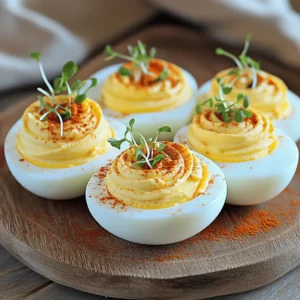



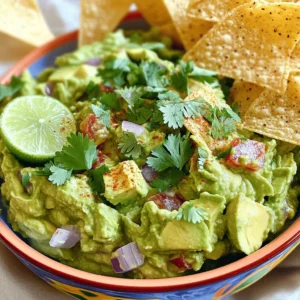


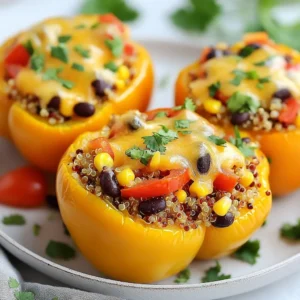

![The magic of creamy spinach artichoke dip starts with fresh and flavorful ingredients. Here’s what you need: - 1 cup fresh spinach, chopped - 1 cup canned artichoke hearts, drained and chopped - 1 cup cream cheese, softened - 1/2 cup sour cream - 1/2 cup mayonnaise - 1 cup shredded mozzarella cheese - 1/2 cup grated parmesan cheese - 2 cloves garlic, minced - 1 teaspoon onion powder - 1/2 teaspoon crushed red pepper flakes (optional) - Salt and pepper to taste Each ingredient plays a vital role in creating a rich and creamy blend. Fresh spinach brings a touch of color and nutrition. The artichokes add a unique texture and taste. Cream cheese, sour cream, and mayonnaise create that luscious base. The mozzarella and parmesan give it a cheesy stretch and depth. Garlic and onion powder add warmth and flavor. Adjust the crushed red pepper flakes for your desired heat level. For more detailed instructions, check the Full Recipe. - Preheat the oven to 350°F (175°C). - In a large mixing bowl, combine the softened cream cheese, sour cream, and mayonnaise. Beat them until smooth. This step ensures a creamy base. - Next, add the chopped spinach, drained artichoke hearts, shredded mozzarella, grated parmesan, minced garlic, onion powder, and optional crushed red pepper flakes. - Season the mixture with salt and pepper to taste. Mix everything until well combined. This blend holds all the flavors. - Transfer the dip mixture into a baking dish. Spread it out evenly so it cooks well. - Bake in the preheated oven for 25-30 minutes. Look for a bubbly and golden top. - Once done, remove the dish from the oven. Let it cool slightly before serving. Enjoy with tortilla chips, toasted baguette slices, or fresh veggie sticks. For a special touch, garnish with more parmesan cheese or sprinkle red pepper flakes for extra flavor! For the complete recipe, check out the [Full Recipe]. - Ensure cream cheese is softened: Soft cream cheese mixes easily. Take it out early to warm up. - Adjust seasoning to preference: Taste as you go. Add salt, pepper, or garlic for a kick. - Add more cheese for creaminess: Extra mozzarella or parmesan makes the dip richer and tastier. - Pairing with dips and garnishes: A sprinkle of fresh herbs brightens the dip. Try parsley or chives for color. - Best dippers for the dip: Tortilla chips, toasted baguette, or veggie sticks work great. Each adds its own crunch. - Creative serving ideas: Use small bowls for individual servings. Top with more cheese and bake for a fun twist. For the complete guide on making this dip, refer to the Full Recipe. {{image_2}} You can easily adapt this creamy spinach artichoke dip to fit different diets. Here are some ideas: - Gluten-free options: This recipe is naturally gluten-free. Just ensure your dippers, like tortilla chips, are also gluten-free. - Dairy-free substitutions: Use dairy-free cream cheese and sour cream. You can also try cashew cream for a rich texture. - Vegetarian additions: While this dip is vegetarian, you can add more veggies. Try diced bell peppers or mushrooms for extra flavor and texture. Want to mix things up? Here are some fun flavor twists: - Spice it up with jalapeños: Add diced jalapeños for a kick. This gives your dip a nice heat that many will love. - Add proteins like chicken or bacon: Shredded chicken or crumbled bacon elevates this dip. It turns a classic snack into a hearty dish. - Experiment with different cheeses: Swap mozzarella for gouda or cheddar. Each cheese adds its own unique flavor and creaminess. For the full recipe, check out the delicious creamy spinach artichoke dip. To keep your creamy spinach artichoke dip fresh, store it in an airtight container. This method helps lock in flavor and moisture. It lasts about 3 to 4 days in the fridge. Always check for any off smells before using leftovers. When reheating, aim for low heat to keep the dip creamy. You can use the oven, microwave, or stovetop. Stir often to avoid burning. If you want to freeze it, you can! Just store it in a freezer-safe container. It lasts about 2 to 3 months in the freezer. Thaw it in the fridge overnight before reheating. For the best taste, enjoy it fresh! You can find the full recipe for creamy spinach artichoke dip to whip this up. Can I make this dip ahead of time? Yes, you can make this dip ahead of time. Just prepare it, cover it, and store it in the fridge. When you’re ready to serve, bake it as directed in the Full Recipe. This makes it great for parties! What can I substitute for sour cream? You can use Greek yogurt as a healthy swap for sour cream. It gives a nice tang and creamy texture. Cream cheese can also work if you want a thicker dip. How can I make it spicier? Add more crushed red pepper flakes or diced jalapeños to the mix. You can also use hot sauce or pepper jack cheese for an extra kick. Adjust the spice to your taste! Is this dip healthy? It depends on your diet. This dip has cheese and cream, so it is rich. You can make it healthier by using low-fat ingredients. Adding fresh veggies can also boost its nutrition. How to serve creamy spinach artichoke dip? Serve this dip warm for the best taste. Use tortilla chips, toasted baguette slices, or veggie sticks for dipping. You can also top it with more cheese or fresh herbs for flair. What are the best sides for this dip? Tortilla chips and pita bread work great. Fresh veggies like carrots and celery add crunch. You can also try crackers or toasted bread slices for variety. Can I include other vegetables? Yes! You can add chopped bell peppers, mushrooms, or zucchini. Just make sure to drain any excess moisture to keep the dip creamy. Feel free to experiment! This blog post shared a simple and tasty recipe for creamy spinach artichoke dip. I explained the key ingredients and step-by-step instructions for making it. You also learned helpful tips for perfecting the dip and creative ways to serve it. If you want to adapt the recipe, I covered different variations and dietary options. Lastly, I included storage and reheating tips. Enjoy this dip at your next gathering or just as a snack. Try making it your own with different flavors!](https://cheftaling.com/wp-content/uploads/2025/06/b3b2e184-14ef-47f9-a1b2-78392a8d065c-300x300.webp)
![To start this salad, choose your favorite berries. I love using: - 1 cup strawberries, hulled and quartered - 1 cup blueberries, whole - 1 cup raspberries, whole These berries add bright colors and sweet flavors. They are rich in vitamins and antioxidants too. Next, we need some greens for a crisp base. I recommend: - 1 cup baby spinach, washed and dried - ½ cup arugula, washed and dried These greens give the salad a fresh taste and a nice crunch. Now, let's add some creamy and crunchy elements. Use: - ½ cup feta cheese, crumbled - ¼ cup walnuts, toasted and chopped The cheese adds creaminess, and the nuts bring texture and a nutty flavor. Finally, we need a dressing to tie everything together. For this, gather: - 2 tablespoons honey - 2 tablespoons balsamic glaze - 1 tablespoon olive oil - Salt and pepper to taste This dressing gives a sweet and tangy kick to the salad. It makes every bite delightful. For the full recipe, check out Berry Bliss Summer Salad. Start with the mixed berries. If you use strawberries, hull and quarter them. Keep blueberries and raspberries whole. Rinse the berries gently. This keeps them fresh and clean. Next, wash and dry the baby spinach and arugula. Make sure they are dry to avoid soggy greens. Get a large salad bowl. First, place the baby spinach and arugula at the bottom. This forms a nice base for your salad. Then, add the mixed berries on top. Spread them evenly across the greens. Next, sprinkle crumbled feta cheese over the salad. Finally, add toasted walnuts for texture and crunch. In a small bowl, take honey, balsamic glaze, and olive oil. Add a pinch of salt and pepper for flavor. Whisk them together until they mix well. This dressing adds a sweet and tangy taste to the salad. Drizzle the dressing over the salad. Gently toss the salad to coat the greens and berries. Make sure everything gets a bit of dressing. For the final touch, add fresh mint leaves on top. This adds bright color and extra freshness. Serve the salad in a large, shallow bowl. This makes the colorful ingredients stand out beautifully. For the full recipe, check out the Berry Bliss Summer Salad section above. To make your salad shine, pick ripe berries. Look for vibrant colors and no bruises. Strawberries should smell sweet and feel firm. Blueberries should be plump and smooth. Raspberries need to be deep red, not mushy. When you find the best berries, your salad will taste amazing! To boost flavors, try adding a pinch of salt to the berries. This small tip makes them taste sweeter. You can also mix in some lemon juice. A splash of citrus brightens the whole dish. Experiment with fresh herbs like basil or cilantro for a unique twist. These flavors will make your salad stand out. Serve your salad in a large, shallow bowl. This lets the colors pop. Arrange whole berries and mint leaves on top for a pretty look. Drizzle the dressing artfully over the salad before serving. Use a light hand with the dressing to avoid sogginess. A well-presented salad is sure to impress your guests. For the full recipe, check out the Berry Bliss Summer Salad! {{image_2}} You can make this salad heartier by adding proteins. Grilled chicken is a great choice. It adds flavor and makes the dish filling. You can also use shrimp or tofu for a tasty twist. Just cook them well and slice before adding to the salad. Feel free to swap ingredients based on your taste. If you don’t like feta, try goat cheese. It gives a nice tang. You can also change the nuts. Almonds or pecans work well. If you want less sweetness, use lemon juice instead of honey. As the seasons change, so can your salad. In fall, add slices of apples or pears. In winter, try pomegranate seeds for a pop of color. Each season brings different fruits, so get creative! Use whatever is fresh for the best flavor. Check the [Full Recipe] for more ideas! To keep your Summer Berry Salad fresh, store it in an airtight container. Make sure the container is clean and dry. Keep the salad in the fridge to maintain its crispness. Avoid adding dressing until you serve. This helps keep the greens and berries from wilting. If you have leftovers, gently separate the salad components. Put the greens in one container and the berries in another. Store the dressing in a small jar or bowl. This keeps each part fresh and tasty. When you’re ready to eat, mix everything again. Most ingredients last a few days in the fridge. Fresh berries can last about three to five days. Spinach and arugula stay fresh for about three days. Feta cheese can last up to a week if stored well. Walnuts keep for a month when sealed. Remember, always check for any signs of spoilage before eating. Yes, you can use frozen berries. Just thaw them first. Frozen berries may be softer than fresh ones. They can still add great taste and color to your salad. You can use pecans or almonds instead of walnuts. Both nuts add a nice crunch. They also bring their own unique flavors to the salad. To make this salad vegan, skip the feta cheese. You can use avocado for creaminess instead. A bit of nutritional yeast can add a cheesy flavor too. A light grilled chicken or fish works well. You could also serve a crusty bread or a soup. These options complement the freshness of the salad nicely. It takes about 15 minutes to prepare. This quick time makes it easy for a last-minute meal. Just gather your ingredients, and you’re ready to go! For the full recipe, check out the Berry Bliss Summer Salad. This blog post covered how to create a delicious Summer Berry Salad. You learned about selecting fresh berries, greens, and protein options. I shared step-by-step instructions for prepping ingredients, assembling the salad, and making the dressing. Tips on enhancing flavors and presenting the salad helped you elevate your dish. Finally, proper storage methods ensure freshness and quality. Enjoy creating your unique versions and satisfying your taste buds! Your salad journey starts now.](https://cheftaling.com/wp-content/uploads/2025/06/ba549531-3911-4758-b151-4f51cb7bcd08-300x300.webp)


